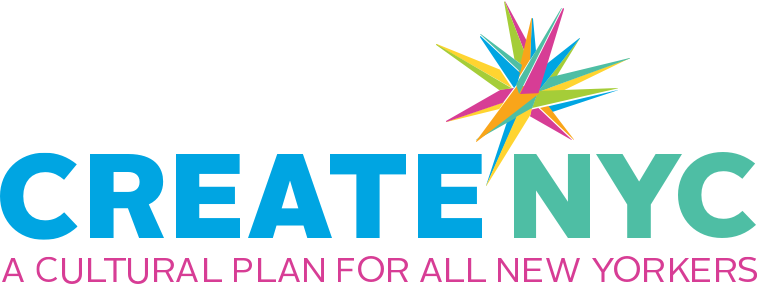The entire CreateNYC process has supported the creation of a plan of action to improve and enhance the cultural life of New York City. While many of the issues are inter-related, the plan is organized into eight Issue Areas, with the following chapters addressing each one in more depth.
NAVIGATING THE PLAN
Each chapter consists of a narrative section detailing research findings and public feedback. The narrative provides context for the set of Objectives and Strategies that close out each chapter. The Objectives are goals that CreateNYC has identified for enhancing New York’s cultural life, and Strategies are the actions needed to achieve them.
The time horizons are reflections of the speed that they can be initiated under current circumstances, and not a reflection of priority level. The medium- and long- term strategies, for instance, will require large structural changes, considerable resources, and high levels of participation and collaboration across many stakeholders. The longer time horizon does not reflect a lower level of urgency.
We seek to be thoughtful, deliberate, and inclusive of the stakeholders impacted by whatever we develop for implementation.
TIME HORIZONS
Each Strategy in CreateNYC has an accompanying time horizon for its implementation:
IMMEDIATE: Within 12 months
SHORT: Within 2 years
MEDIUM: Within 4 years
LONG: Within 10 years
TERMS
The following are definitions of terms used in the Issue Area chapters:
DIVERSITY
Diversity is broadly defined as inclusive of communities representing categories of identity including, but not limited to:
- Historically underrepresented communities,
- Including individuals from ALAANA* racial and/or ethnic groups, people with disabilities, and other populations listed below
- LGBTIQ populations
- People with disabilities
- All genders, including transgender and gender
- Non-conforming individuals
- Indigenous, immigrant, and refugee populations
- ESL or non-English language speakers
- All ages, including older adults and youth
- Low-income New Yorkers
The definition of diverse communities includes those marginalized groups that have historically experienced a lack of access to financial resources and/or social and organizational mobility. We note the significant and vital interconnection, overlap, and intersectionality between these communities.
EQUITY
Improving equity means promoting justice, impartiality, and fairness within the procedures and processes of institutions or systems, as well as in their distribution of resources.
INCLUSION
Inclusion refers to the degree to which all people, including people with disabilities, with diverse perspectives and backgrounds are able to participate fully in the decision-making processes of an organization or group and in all elements of an organization, performance, event, or programs. While a truly inclusive group is necessarily diverse, a diverse group may or may not be “inclusive.”
ACCESS
Improving access means reducing economic, social, communication, and physical barriers to inclusive participation. Accessibility** describes the degree to which an environment, service, product, or program allows access and eliminates barriers to participation by diverse or underrepresented communities, especially people with disabilities.
*ALAANA = African, Latin, Asian, Arab, Native American
**Accessibility definition is dirived from Mayor’s Office for People with Disabilities’206 annual report Accessible NYC

